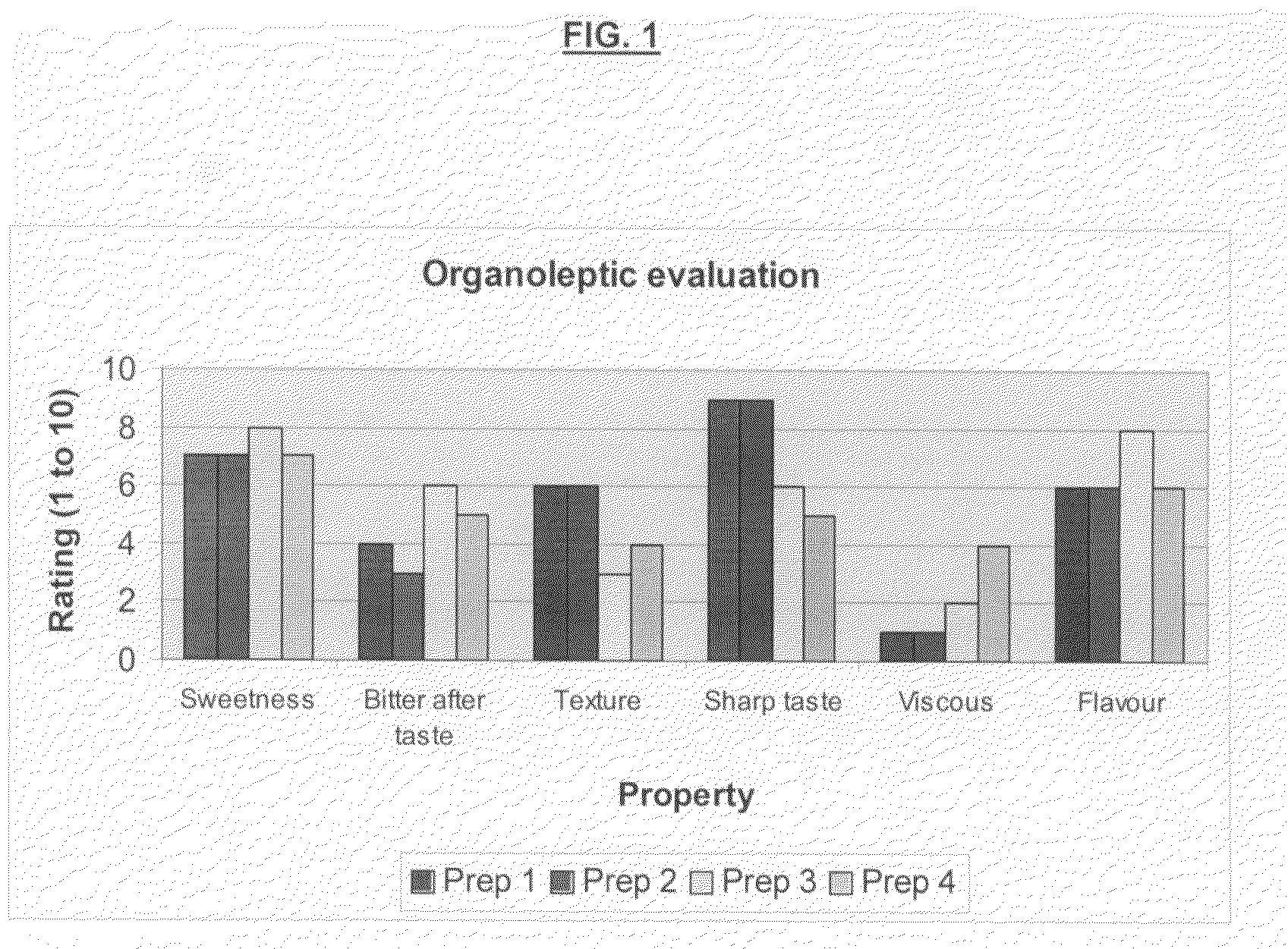Reduced calorie sweetener composition
a technology of calorie sweetener and composition, which is applied in the field of calorie sweetener composition, can solve the problems of lack of organoleptic feel, unsatisfactory taste of food preparations in which the sweetener is used, and inability to obtain the properties of high-intensity sweeteners, so as to reduce the level of sucrose use, enhance the overall taste properties, and enhance the exclusive sucrose specific organoleptic properties
- Summary
- Abstract
- Description
- Claims
- Application Information
AI Technical Summary
Benefits of technology
Problems solved by technology
Method used
Image
Examples
example 1
[0053]The following composition is developed and proposed for use in food commodities such as beverage, chewing gums, etc. and compared with that of preparations using plain sucrose with same sweetness intensity.
[0054]A formulated dry sweetener product made with Trichlorogalactosucrose (TGS) which is 1′,6′-Dichloro-1′,6′-Dideoxy-â-D-Fructo-Furanosyl-4-Chloro-4-Deoxy-á-D-Galactopyranoside (also widely known as sucralose), Acesulphame K and Neotame, Tapioca starch, maltodextrin, citric acid and flow agents was produced by first mixing the following components in a Hobart mixer.
ParticularsQty (g)TGS5.52Acesulphame K3.68Neotame0.003Starch emulsifier14.7Sucrose14.7Maltodextrin (Diluent)738Citric acid (Diluent)738
[0055]Then, 1520 grams of water was slowly added for about 1 hour until the mix was slightly damp. The material was then removed and dried overnight (16 hours) at 170.degree. F. and ground.
[0056]The sweeteners according to their organoleptic properties (desirable and undesirable ...
preparation 1
[0059]
ParticularsQty (g) / cupSucrose5.00Instant Coffee0.99Nondairy Creamer3.97Vanilla Flavor0.08Water72.86
preparation 2
[0060]
ParticularsQty (g) / cupSweetener mix sachet2.04Instant Coffee0.99Nondairy Creamer3.97Vanilla Flavor0.08Water72.86
PUM
 Login to View More
Login to View More Abstract
Description
Claims
Application Information
 Login to View More
Login to View More - R&D
- Intellectual Property
- Life Sciences
- Materials
- Tech Scout
- Unparalleled Data Quality
- Higher Quality Content
- 60% Fewer Hallucinations
Browse by: Latest US Patents, China's latest patents, Technical Efficacy Thesaurus, Application Domain, Technology Topic, Popular Technical Reports.
© 2025 PatSnap. All rights reserved.Legal|Privacy policy|Modern Slavery Act Transparency Statement|Sitemap|About US| Contact US: help@patsnap.com

